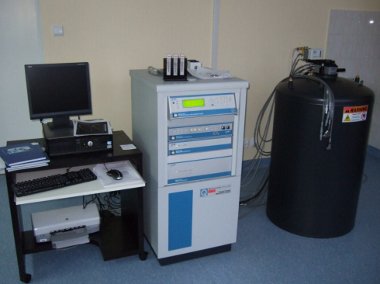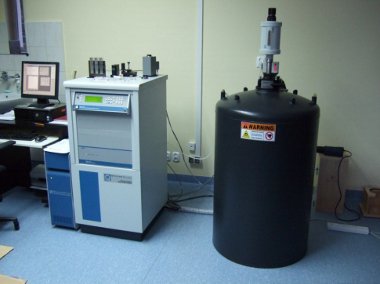Research carried out in our Laboratory concern mechanisms of formation and stabilization of liquid crystal phases. In particular the analysis of the influence of many different factors (such as electric field, temperature, defects, polymer additives and surface interactions) on the physical properties of liquid crystals is performed. Our investigations include also the development of computer simulation methods to study soft matter particle systems.
The systems under investigation are such different mezophases as: nematics, smectics, cholesterics, frustrated chiral phases (TGB, BP), ferroelectric and antiferroelectric smectics, as well as cellulose-based liotropic superstructures. Investigations are focused on the description of structural, thermodynamic, optical, dielectric, electro-optic and visco-elastic properties of these phases as a function of frequency and strength of electric field, composition of material and temperature. Moreover, the modelling of the soft matter and simple liquids with computer simulation techniques (in particular, Molecular Dynamics MD, Brownian Dynamics BD, Monte Carlo MC) is carried out.
Examples of realized tasks
- Structural, dielectric, visco-elastic and electro-optic properties of chiral liquid crystals (blue phases especially)
- Self-organization in the systems of soft matter (liquid crystals, colloids)
- Nonlinear dynamic effects in surface-stabilized liquid crystals
- The influence of surface interactions on the physical properties of thin smectic liquid crystals
- Development of computer simulations methods (MD, BD, MC): deterministic thermostats and simulations of strongly confined particle systems
- Simulations of structural, thermodynamic and dynamic properties of soft matter and simple liquids systems
- Investigation of layered LC/cellulose-type structures
Research projects
- The statutory project (2016 - 2018) - Physical properties of thin liquid crystal films - dr hab. A.C. Brańka, prof. IFM PAN
- NCN project (OPUS 13) - Elastic properties of liquid crystal blue phases (2018 - 2021), project leader - dr hab. A.C. Brańka, prof. IFM PAN
- NCN project (MINIATURA 1) - Preparation and characterization of nanocrystalline cellulose/liquid crystal systems (2017/2018), project leader - dr inż. N. Bielejewska
- Participation in the LIDER project (Edition VII) carried out by the Wood Technology Institute - New biopolymer adhesives modified with silanes and ionic liquids for application in wood-based materials technology (2017 - 2019), main worker/ investigator - dr inż. N. Bielejewska
- NCN project (OPUS 3) - Stationary states in spatially limited microscopic systems: acoustic micro-voids and stimulated microgel molecules in microchannels (2013 - 2016), project leader - dr hab. A.C. Brańka, prof. IFM PAN
- MNiSW project - Identification of a new type of de Vries phase (2010 - 2014), project leader - dr hab. J. Hoffmann, prof. IFM PAN


